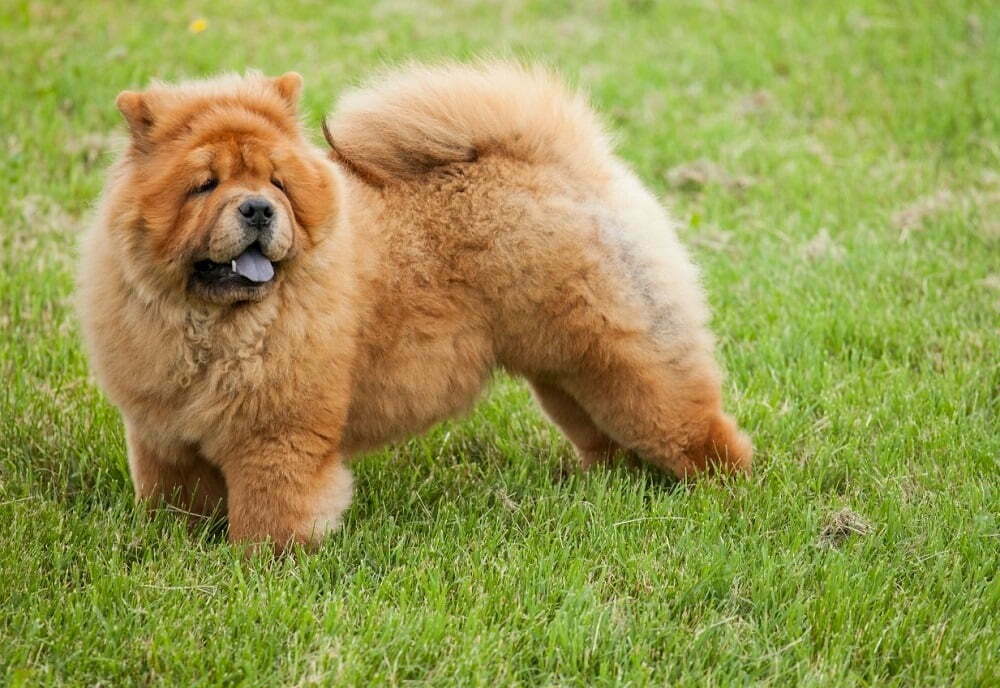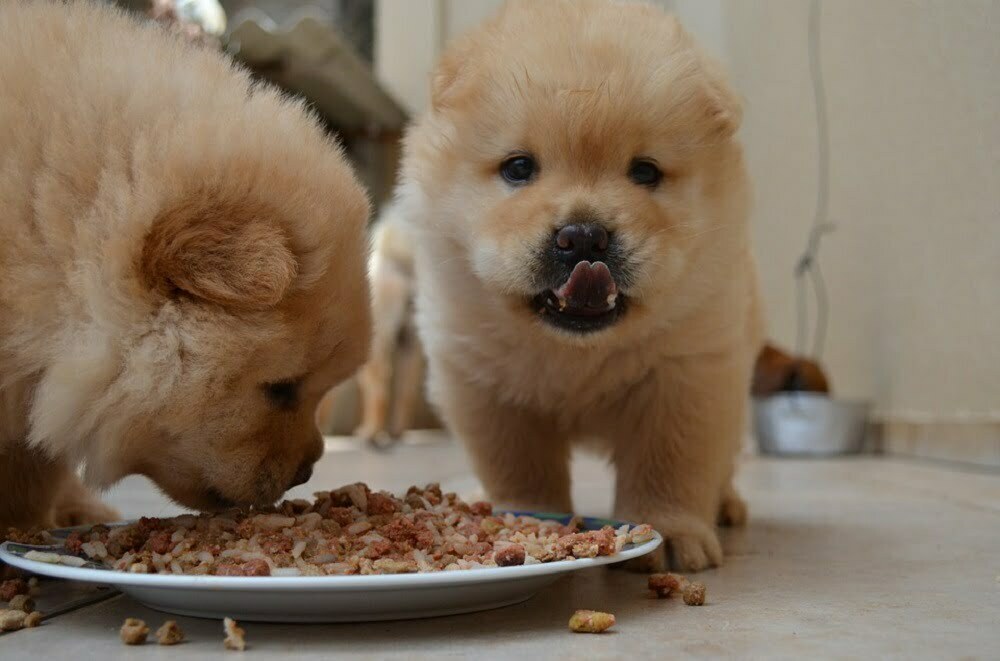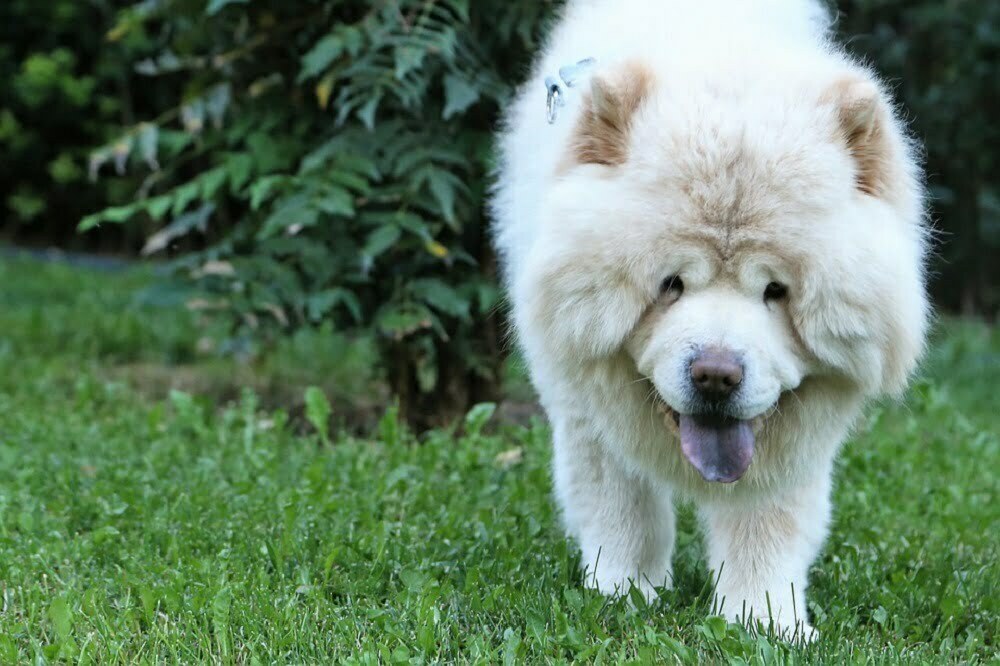Chow Chows are wonderful dogs renowned for looking like bears, but there is much more to the breed than this. If you are looking to bring a chow Chow into your home, you will need to do some research to find out more about them.
While Chow Chows can make excellent pets, they might not be the right dog breed for everyone. They are medium-sized dogs with stubborn attitudes and interesting personalities; you will need to know exactly what you are getting yourself into before you bring this dog into your home.

To help you with this, we are going to tell you everything you need to know about the Chow Chow breed, so you can discover if this is the right dog breed for you. We Look at everything from their appearance to their personality and everything else you should know.
Average Lifespan
The average lifespan of a Chow Chow is between 9 and 15 years old. However, this can be influenced by various different factors, like their size, health, physical traits, and various environmental factors.
Minimum Exercise (per day)
Chow Chow’s are a low to moderate-energy dog breed, but every dog is different, and some Chow Chows can be quite lazy, though others can be much more active. Generally, these dogs will need between 45 and 60 minutes of exercise every single day.
You can often tell how much exercise your dog needs based on their energy levels. if they are lying down and refusing to move halfway through your walk, then it is likely that they have had enough exercise for the day.
However, daily exercise is just as important for the lazy Chow Chow’s for them to be able to release the energy that they have stored up, maintain their weight and overall health, and to prevent boredom.
There are three main types of exercise that you should be providing your dog with on a daily basis. This includes:
- Daily walks
- Free Play
- Mental stimulation
The recommended amount of daily exercise for Chow Chow’s is based on you having a healthy adult chow Chow. The exercise needs of a puppy are much different to this as your puppy will still be growing. Giving a puppy the wrong amount of daily exercise can lead to injuries with groin bones and joints.
As your dog starts to get older they will become less active as they will have much lower energy levels. However it is still important that they remain as active as they can be to help to keep their joints and muscles mobile and to manage their weight better.
Coat Length
Chow Chow’s can have two types of coats, either rough or smooth. the rough coat, which is the most likely of the two options, will be thick and full comma standing out from the body. underneath this out of coat will be a soft thick and wooly undercoat. you can expect the hair to be thicker around the head and neck, forming a mane. The tale is another area where you are likely to find thicker fur.
If your dog has a smooth coat, it will be hard, dense, and smooth on the outer coat, with no obvious ruff or feathering. With both of these types of coats, the coat will come in one of 5 colours. These colours can include red, black, blue, cinnamon, and cream. These colors can also be either solid with lighter shadings or solely solid.
Minimum Cost (per month)
You can expect owning a Chow Chow to cost at least £80 a month once you have purchased everything you need for setup. You can also expect them to cost up to £13,000 across their lifetime. After setup costs have been accounted for you can expect to pay ongoing costs and other additional costs.
Some of the ongoing costs that you can expect to pay for are:
- Food
- Preventive healthcare – You should budget for routine vet visits to stop your dog from getting ill. They will require annual check-ups, vaccinations, and regular flea and worming treatments. Your vet might even offer a health care plan that allows you to spread the costs over the course of the year.
- Vet bills* or pet insurance – Without the right level of pet insurance in place, the costs for vet visits and checkups can quickly increase to a point where it becomes unmanageable. You should always check what is covered under your policy, just to be on the safe side.
- Accessories – Some of the accessories that you might need are poo bags, replacing worn toys and grooming accessories, buying dog toothpaste, and any other extras they might need.
Some of the other additional costs that you can expect to meet are:
- Training – This is very important; dogs usually benefit from formal classes. Some dogs may have, or develop, behavioural problems which could need professional management.
- Boarding – If you are planning on being away from your home, like to go on holiday, you might want to factor in boarding and dog sitting costs.
- Dog walkers/day-care – You may also require a professional dog walker to keep your dog happy and healthy if you cannot provide your dog with the amount of exercise or company they need.
Appearance
Chow Chow’s are medium sized dogs that range in height from 17 to 20 inches. They will also usually weigh somewhere between 50 and 75 pounds. Chow Chows are square dogs with straight legs contributing to stilted gait.
They also have erect ears, a broad skull, and a tail that curls up over their back. Their trademark characteristic is usually their black or blue tongue, and for their size, they are a strong and sturdy dog.
Temperament

Something that you might already know if you have met a child before is that they are serious and refined dogs that don’t typically care too much for over the top affection. If you are looking for a dog that likes to cuddle or show affection, then you might want to choose another dog breed.
Chow Chow’s are known for being generally reserved and keeping to themselves. Due to some of their traits and characteristics they are often described as cat-like.
A well socialised trial shouldn’t cause any trouble but they can sometimes be standoffish and don’t typically Trust strangers well. a child that has not been properly trained or socialized can sometimes be aggressive in nature but this will depend on the dog in specific.
Chow chow’s are both strong-willed and smart and they are likely to give you a clear warning if they don’t like what you are asking them to do. However with that being said, Chow Chows are highly loyal and they are very loving when it comes to their families. They can sometimes grow a bond with one specific person in the family who they will go to for love and attention, but this is not always the case.
Apartment Living
The chow chow is a large dog breed, but that doesn’t automatically mean that they can’t live in an apartment. In fact, because they don’t need lots of exercise, they can be very satisfied in an apartment.
Good for Novice Owners
Chow Chows are not good for first-time dog owners, And you should seriously consider getting a different dog breed if you have never owned a dog. Even if you have a dog, this is not the right breed for anyone without experience.
Chow Chows Are known for being extremely stubborn and Incredibly loyal and protective. Even though these are often considered to be good traits they can also be really bad for first time owners if they are not handled in the right way.
Their dominance and stubbornness can easily lead to someone getting bitten by your dog if they are not trained in the right way.
Sensitivity Level
Chow Chows are much less sensitive than other dog breeds but aren’t always receptive to their owner’s emotions. They do handle soft punishment quite well, and they aren’t usually too bothered by a changing daily routine, a hectic household, young children, noisy environments, and frequent guest visits.
Tolerates Being Alone
Chow Chows are often quite antisocial, which means that they don’t like to be around people all the time and tolerate being left alone.
Tolerating Hot and Cold Weather
Chow chows tolerate cold weather well, but they do not do so well in hot weather. They will need a cool place, preferably indoors, when it is hot outside, where they can go to cool off and get out of direct sunlight when they need to.
Affectionate With Family
These dogs are known to be dignified 2, no-ball, and somewhat distant at times. However, Chow Chow’s can often feel deep affection and love for their families.
Although, they might not show it in the same ways as other dogs. Some of the ways in which they may show affection towards you is by licking you, leaning against you, or being excited whenever you return home.
Kid-Friendly
When these dogs have been raised with children, they can do quite well with them. However, you should know that they don’t always do best in rough and tumble environments, and they will not tolerate a lot of abuse from a young child. This means that chow’s often do best in families with older or no children who understand how to treat a dog and respect its boundaries.
Just like with any other dog you should always be sure to teach your children how to approach and touch your Chow Chow, and you should always supervise any interaction between dogs and young children to prevent any accidents from happening.
Dog Friendly
Chows that are socialized and trained well will usually get along with other dogs, and even cats. It is usually best to introduce your Chow to other dogs when they are still puppies, as this usually produces the best results when it comes to socialization. you should also be aware of the fact that these dogs do best one they are with dogs of the opposite sex and they may fight with dogs that are of the same sex.
Friendly Toward Strangers
They are not naturally friendly towards strangers as they have a strong guarding instinct and urge to protect their people.
Common Health Problems
Unfortunately, just like with many other purebred dogs, Chow Chow’s are prone to certain health conditions because they’ve been bred. If you are thinking of buying a Chow Chow puppy, it is worth being aware of some of the health conditions that can occur. You should also make sure that both of the parents of the puppy have had the right tests and screenings done to ensure that they are in the right health.
Some of the conditions that Chow Chows may develop include:
- Hip dysplasia – This is when the hip joint does not fit together as it should, which will eventually lead to arthritis. Before they are bred, dogs should be screened through x-rays as per the Kennel Club hip dysplasia scheme.
- Elbow dysplasia – This is when the elbow joint does not fit together as it should, which will eventually lead to arthritis. All dogs should be screened by X-rays before breeding, through the elbow dysplasia scheme
- Cruciate ligament disease – This can cause the knee joint to become very wobbly and painful, leading to limping in your dog.
- Gastric Dilatation Volvulus (GDV) – This is also known as bloat, and is a condition where the stomach twists. This is an emergency and requires urgent veterinary attention.
- Eye conditions like Entropion, Panosteitis, and Hypothyroidism.
Shedding
Chow Chows are a heavy-shedding breed with two different coat types. These two types are smooth and rough, and both of these coat types will shed seasonally. However, the rough coat, the most common type, will require more brushing to avoid mats with the thicker and longer coat.
Grooming
Chow Chow’s will need to be brushed almost everyday with a large and slick brush like a pin brush or a metal comb to prevent matts. Dogs with a heavier coat will also need to be bathed about once every three months. their coats are naturally oily and repellent, so they do not usually develop an odor. However, if they do manage to track the coat through the mud, you can be sure that they will need to be bathed more frequently.
Dogs with a heavy coat will usually need to be trimmed around the face, ears, feet, and behind to help them stay comfortable. You do not need to clip or trim the body hair as this will provide insulation for your dog in cold weather and help keep them cool in warm weather.
It is also really important to routinely clean your dog’s eyes and ears and keep an eye out for any potential infections that could be causing problems. It is ideal to brush your dog’s teeth everyday, but even doing so on a weekly basis will help to avoid a build-up plaque and any unwanted dental issues. Finally, you will need to trim your dog’s nails if they start to become too long. Alternatively, you can take them to a groomer, where they can do it for you.
Potential For Weight Gain
When they’re adults, Chow Chows do have a tendency to become overweight. If you notice that your dog is gaining weight, you will need to monitor the amount of food they are eating and the type of food they are eating. Sometimes, healthy weight dog food formulas can help to manage weight gain if you are concerned.
Trainability
Chow Chows can be difficult to train at times, and this is usually due to the fact that they are very stubborn and will not do anything that they do not want to do. You will need to follow consistent and positive reward-based training for successful training sessions, as this is what Chow Chows will respond best to.
Intelligence
Chow Chows are intelligent in their own unique way, especially when getting something they want. These dogs are very self-motivated, and can display their intelligence when it suits them.
Potential to Bite
Unfortunately, Chow Chows are dogs with a high prey drive, which can lead to instinctive aggression, especially when it comes to food. They can also sometimes become territorial, and should be trained not to bite where possible.
Tendency To Bark Or Howl
Chow Chows are not very likely to bark and typically don’t make much noise throughout the day. The only time they are likely to bark is when they see something new or feel threatened.
History

Chow Chows Are an old breed but it is difficult to know for sure when they first came around. It is thought that this breed of dog has been around for around 2000 to 3000 years. Historians have actually found records of a Chow like dog in texts from the 11th century. Some people believe that they are a result of mixing the mastiff of Tibet with the Samoyed in northern Siberia.
Other people insist that they influenced the Samoyed, the Norwegian elkhound, the keeshond, and the Pomeranian. It is also thought that Siberian dogs made their way to Mongolia, where they were eventually brought to China by The Mongols. The bear-like dogs were then welcomed into Tibetan monasteries.
Even though they are originally from the North, Chow Chow’s have most frequently been seen in Southern China and are often considered indigenous to Canton’s region. They were often used as working dogs and they were trained to hunt, guard, pull sleds, and sometimes even herd cattle.
The name ‘chow chow’ comes from a pidgin-English term that was used to describe anything from the East in the 18th century. Essentially, the chow chow inherited the name from merchants that could not be bothered to properly mark what they were shipping.
Interesting Facts About Chow Chows
Before we get into this article, we will provide you with some interesting facts and information about Chow Chows, so you can quickly access information that is helpful to have when it comes to this breed.
- These Dogs Like to Stay Dry
Something that you might not have known about Chow Chows is that they Usually like to keep out and away from the water at all times. Even though they have a strong breed history as working dogs in China, they were not used to working in or around water, and this lack of experience is something that has stayed with the breed. This is mostly due to the fact but this breed’s unique fluffy double coat can be quite hazardous in the water.
- They Have Blue Tongues
Else, you might be interested to find out that these dogs have a uniquely coloured tongue. When these dogs are puppies, they will have a pink tongue. However, as they grow older their tongues will turn to a darker colour. When Chow Chows are fully grown they will have blue black tongues. The only other dog that has this unusual coloured tongue is the Chinese Shar-Pei.
- They Can Have Various Coat Colors
According to the American Kennel Club, Chow Chows can have one of five different coat colors. These colors include black, blue, cinnamon, cream, and red. Their coats can also either be smooth or rough.
